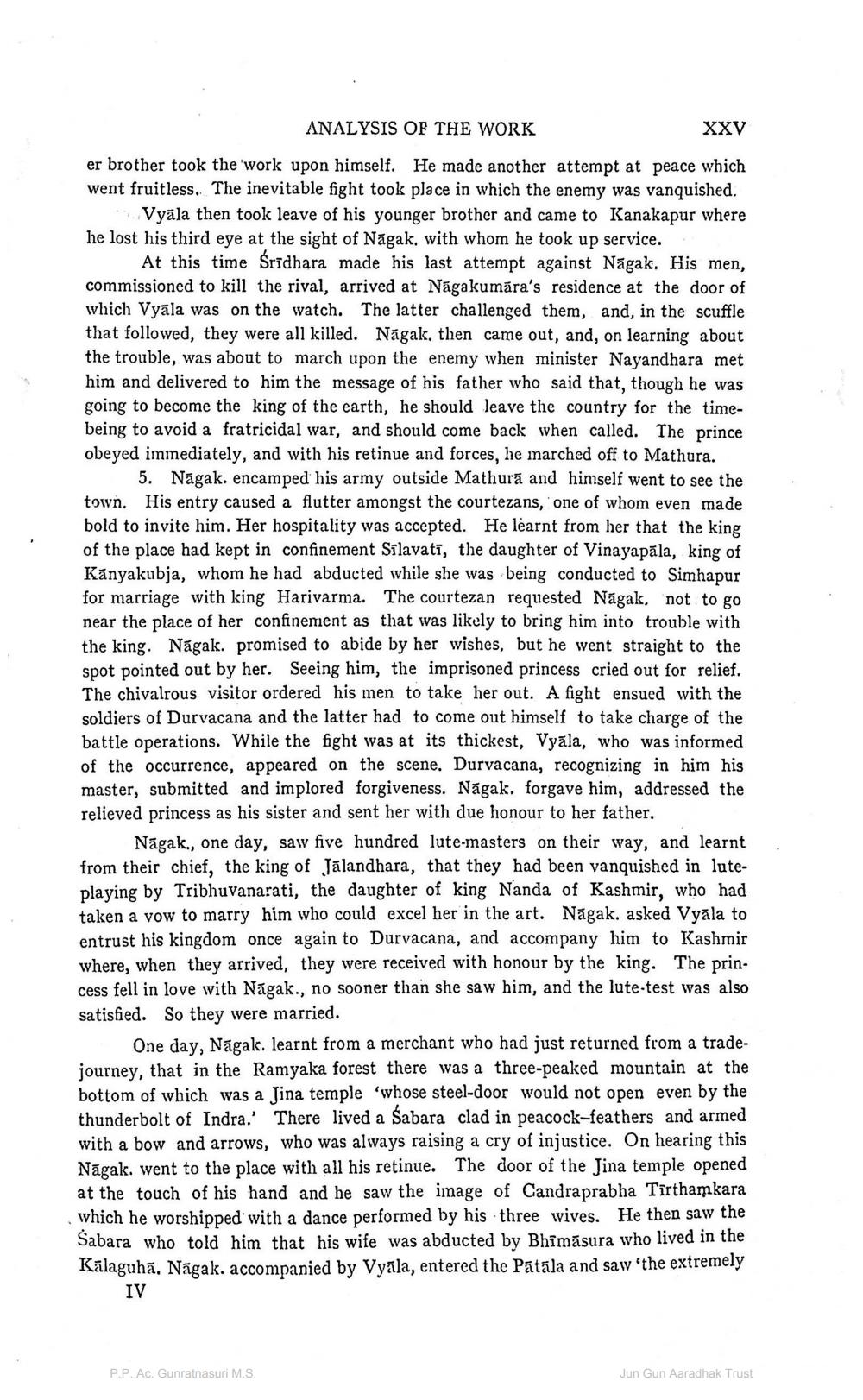________________ ANALYSIS OF THE WORK XXV er brother took the 'work upon himself. He made another attempt at peace which went fruitless. The inevitable fight took place in which the enemy was vanquished. Vyala then took leave of his younger brother and came to Kanakapur where he lost his third eye at the sight of Nagak, with whom he took up service. At this time Sridhara made his last attempt against Nagak. His men, commissioned to kill the rival, arrived at Nagakumara's residence at the door of which Vyala was on the watch. The latter challenged them, and, in the scuffle that followed, they were all killed. Nagak, then came out, and, on learning about the trouble, was about to march upon the enemy when minister Nayandhara met him and delivered to him the message of his father who said that, though he was going to become the king of the earth, he should leave the country for the timebeing to avoid a fratricidal war, and should come back when called. The prince obeyed immediately, and with his retinue and forces, he marched off to Mathura. 5. Nagak. encamped his army outside Mathura and himself went to see the town. His entry caused a flutter amongst the courtezans, one of whom even made bold to invite him. Her hospitality was accepted. He learnt from her that the king of the place had kept in confinement Silavati, the daughter of Vinayapala, king of Kanyakubja, whom he had abducted while she was being conducted to Simhapur for marriage with king Harivarma. The courtezan requested Nagak, not to go near the place of her confinement as that was likely to bring him into trouble with the king. Nagak. promised to abide by her wishes, but he went straight to the spot pointed out by her. Seeing him, the imprisoned princess cried out for relief. The chivalrous visitor ordered his men to take her out. A fight ensued with the soldiers of Durvacana and the latter had to come out himself to take charge of the battle operations. While the fight was at its thickest, Vyala, who was informed of the occurrence, appeared on the scene. Durvacana, recognizing in him his master, submitted and implored forgiveness. Nagak, forgave him, addressed the relieved princess as his sister and sent her with due honour to her father. Nagak., one day, saw five hundred lute-masters on their way, and learnt from their chief, the king of Jalandhara, that they had been vanquished in luteplaying by Tribhuvanarati, the daughter of king Nanda of Kashmir, who had taken a vow to marry him who could excel her in the art. Nagak. asked Vyala to entrust his kingdom once again to Durvacana, and accompany him to Kashmir where, when they arrived, they were received with honour by the king. The princess fell in love with Nagak., no sooner than she saw him, and the lute-test was also satisfied. So they were married. One day, Nagak. learnt from a merchant who had just returned from a tradejourney, that in the Ramyaka forest there was a three-peaked mountain at the bottom of which was a Jina temple 'whose steel-door would not open even by the thunderbolt of Indra.' There lived a Sabara clad in peacock-feathers and armed with a bow and arrows, who was always raising a cry of injustice. On hearing this Nagak. went to the place with all his retinue. The door of the Jina temple opened at the touch of his hand and he saw the image of Candraprabha Tirthamkara which he worshipped with a dance performed by his three wives. He then saw the Sabara who told him that his wife was abducted by Bhimasura who lived in the Kalaguha. Nagak. accompanied by Vyala, entered the Patala and saw 'the extremely IV P.P.AC. Gunratnasuri M.S. Jun Gun Aaradhak Trust




